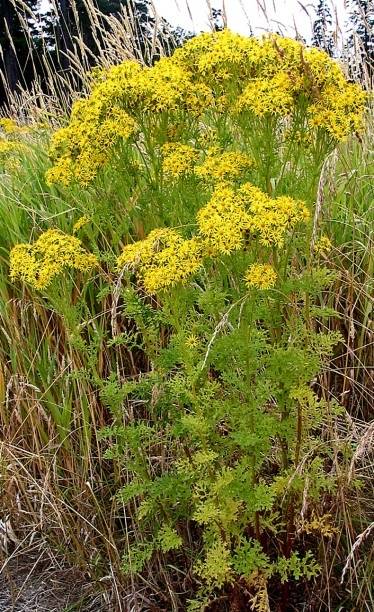Submitted by San Juan County Noxious Weed Program
San Juan County has provided funding over the last several years for “free” noxious weed disposal for residents. The incentivized no-cost weed disposal has been both popular and well used. The County reimburses the waste station operators for the cost of weed disposal unless paid for by the resident.
Unfortunately, the annual budget for free weed disposal has been quickly overspent this year due to historically high volumes of noxious weeds being brought into the waste stations. County waste stations will not be able to accept noxious weeds for free beginning October 1 through the end of the year. From now through Sept. 30 each household will still be still able to dispose of one standard (approximately 32 gallon) can/bag of approved noxious weeds for free (additional bags charged). The free bag/can needs to be clearly marked with the weed species names, the resident’s name, and the location where the weeds were collected. Residents are encouraged to only put the portions of the weeds in the bag/can that they have may pose a risk to spreading weeds (seeds and flowers, for example), and to fully fill or combine bags to make the most of the county’s disposal costs. For more information of weed disposal methods please consult .
The Noxious Weed Board has seen how this program helps property owners control noxious weeds, and in so doing, help meet the weed control requirements found in the state law, RCW 17.10. Tansy ragwort, in particular, has been very popular in 2020, with the largest volume on record. Other species of note include poison hemlock, Scotch broom, spurge laurel, bull thistle, Canada thistle, and Italian arum. Unfortunately, home composting is not an option for many noxious weed species due to their continued viability and, in many cases, toxicity in a finished compost product.
The Noxious Weed Program, which the Weed Board oversees, serves the general public and provides outreach and information to residents in order to help them recognize and control noxious weed species in our county. Education on disposal is an important component of its work, too, as the County grapples with budgetary constraints during the pandemic and seeks to do more with less.
If the weed disposal program is to continue to meet the public’s demand, it must be put on more firm budgetary footing through increased revenues. This will require the public’s support. In the meantime, thanks to everyone who took the time and trouble to bring in your noxious weeds. Our islands’ farmlands, forests and natural areas are much better off without these invasive species!




